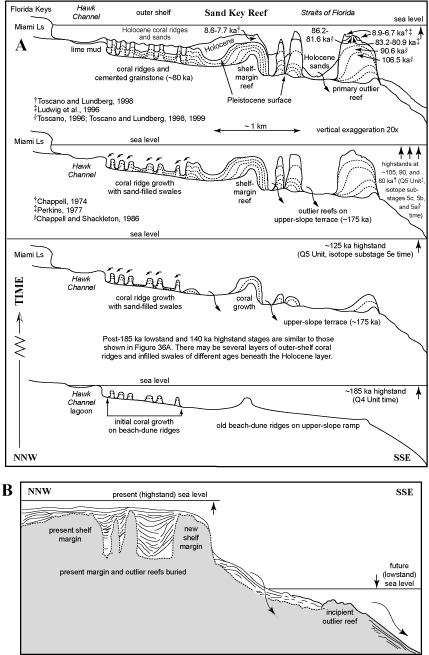FISC - St. Petersburg
Figure 108. (A) Geomorphogenic model of the Sand Key Reef area shows a Pleistocene backstepped reef complex at the shelf margin and Holocene backfilled progradation of the shelf margin (terms proposed by Lidz, 2004; ages >125 ka modified from Lidz, 2004; see Carysfort Reef section for explanation of how model was developed). Note bands of outer-shelf coral ridges. Rendition showing three tracts of outlier reefs is based on seismic data (Figs. 89, line 16b, 91B, 106A; Lidz et al., 1991). Aerial-photo data document four discontinuous tracts (Fig. 106B; Lidz et al., 2003). Ls = limestone. ka = thousands of years. Holocene = the most recent 10 ka. Q1-Q5 Units = names assigned by Perkins (1977) to the five marine sections that compose the most recent part of the south Florida Pleistocene rock record. Marine-isotope substages refer to periods of time that correspond to major changes in the paleotemperature record (Fig. 37A, 37B). Long curved arrows indicate offshelf sediment transport. Short curved arrows indicate landward sediment transport and infilling of backreef troughs. (B) With continued accumulation of sediments, the future seismic record could indicate a progradational margin with multiple lateral sections of landward- and seaward-dipping beds between multiple buried parallel facies of coalesced reef complexes (Lidz, 2004). New outlier reefs may form in front of the present reef complexes. Long curved arrows indicate direction of sediment transport (to the south and west, off the shelf).
|
Can't see the printable PDF version? Get the free Adobe Acrobat® Reader. |
